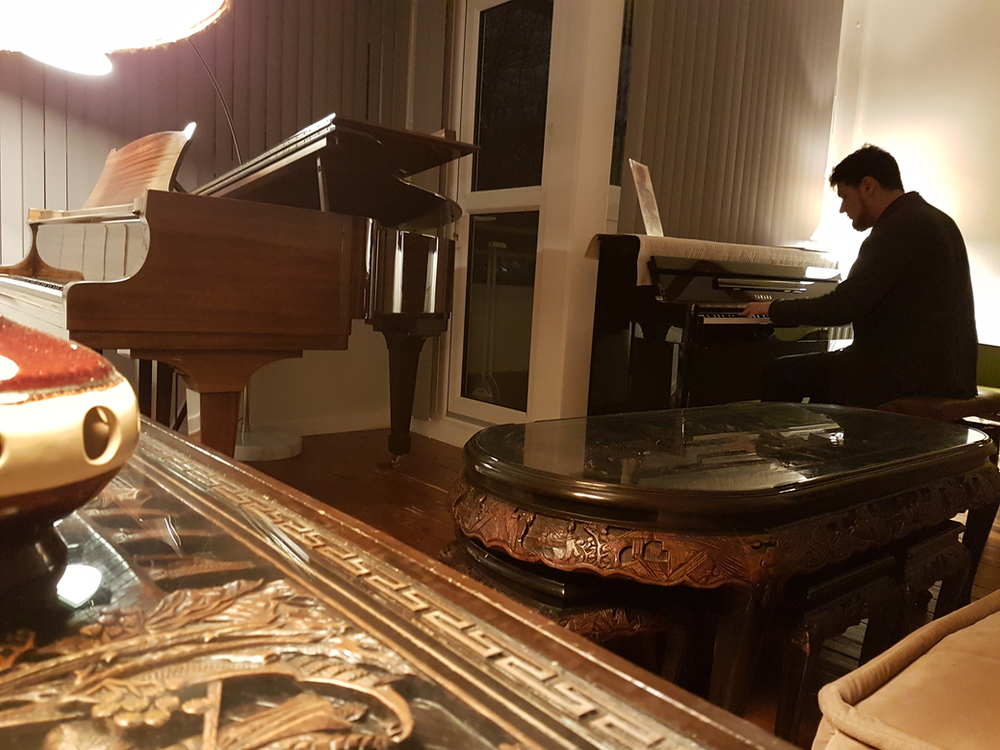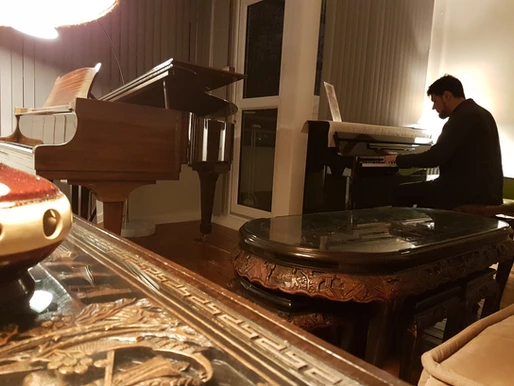Uncategorized
A first approach to Jazz piano language

Want to take jazz piano lessons in London? Click here to study with us.
As a classically-trained pianist, my first approach to piano jazz made me realize how many differences exists within the instrumental techniques according to the genre you want to play. Studying jazz was a distant experience in contrast with anything learned so far.
It’s a musical world with an enormous variety: it covers from the Dixieland to Bebop, going through Ragtime and Fusion. Jazz identity is not easy to delimit, being this term associated more with a musical language. All this diversity makes this complex genre something difficult to get into, as you need to have deep musical knowledge and culture to understand the differences and the elements that made rich these kinds of music.
First and foremost, before any practice can be planned, we learn by listening. The first piece of advice on jazz piano for beginners: It’s impossible to play “jazzy chords” without a vast familiarity and education in this dialect, as it would be unimaginable for an author to write without reading. Jazz study accentuates aural learning, analysis, observation. It requires time, preparation and focuses to get into the style. That’s the most effective and intuitive way to learn how to improvise on piano, a key element in jazz music.
Besides the tune, the melodies, and the jazz piano chord progressions, we put our emphasis on every detail. The articulations in jazz are more important than in any other style, we need to absorb any inflexion on every note, as they are aspects of style and expression. The harmonic subject is rich and ambitious, as we develop loaded and ornamented sequences. The shift between chords of four or five notes in succession demands training and a fluent understanding, not to mention the voicing of the lines. The practice of scales and chords is vital to achieving success in this topic, as we need them to perform in a talkative manner. The harmonic knowledge is also a must to promote improvising skills: we need to master all the keys, the minor scales, the Greek modes, among many other resources in order to know how to improvise on the piano.
Speaking about improvising, it’s unavoidable to mention the importance of transcribing solos. This analytic listening and decoding is the key to promote jazz artistry. We need to benefit ourselves with the lessons of the masters and we have all these repertoires available to learn how they manage the rhythm, the modes, the ornaments, the sequences, the articulations, the style of piano jazz chords progressions and the tone above the harmonic structure. We can only be good improvisers with expert management of the technic and the harmony, original ideas and a personal sound, involving the concept of how you play instead of what you play. The combination of all of these elements is the path in learning how to improvise jazz on the piano.
The most important item we need to main is the rhythm. It’s the quintessential component in all the music. Jazz rhythm has the typical swing quavers and we need to play them in an accurate manner with all the possible combinations of other values, taking care also of the rests, which appears in different parts of the phrases and bars, framing an architectural function in the jazz speech. The accentuation of the bars is different from other genres, putting more emphasis on the beats number 2 and 4 of the bars instead of the first. How the counts are played and subdivided help our perception of recurring pulses and patterns. The speed range is huge, from slow ballads to fast bebop, we can find all the possible tempos.
When we are learning a new tune, it’s easy to realise how many versions exist and how different they are between them. Looking at the jazz piano books (also called “real books”) we can determine what we see on the page is only an approximation of what actually sounds when you perform. Hardly ever we can find articulations, expression marks, or more details rather than the notes and a raw map of the harmony.
This freedom to perform allows us to be very creative but also demands a very qualified way to play. So, it should be noted that in jazz, the performers and arrangers are more important than the composers. You can search for some jazz piano books on pdf for free easily since this material is widely distributed.
Despite we can play jazz as a soloist, it’s more enjoyable to play in an ensemble or jazz band. Performing in a group demands us a very strict understanding of the rhythm and tempo, besides harmony and melody. The importance of occupying a role is enormous in order to make the ensemble sound properly, all the players need to cover their place with confidence and order. Individual apports are crucial to the teamwork: musicians add their own identity and personality and also know where to take their position to the background. The genre expects diversity within continuity.
Considering the great history and the many styles that jazz associate, the creativity it provides through improvisation, performing, and arranging are boundless.
#pianolessonslondon #adultpianolessons #jazzpianolessons #jazzpianolessonslondon #jazzpianoteachers #musiclessonslondon

